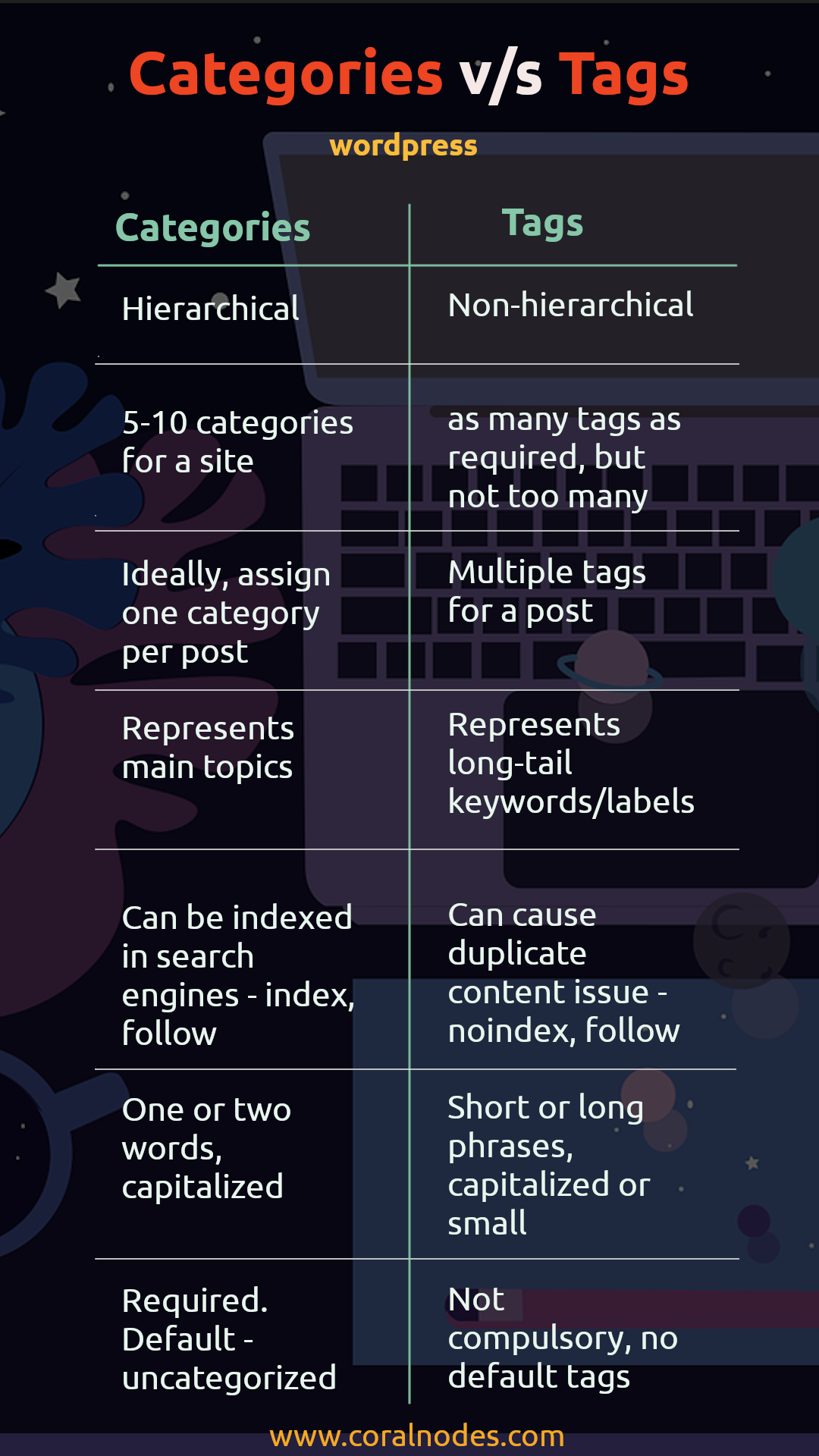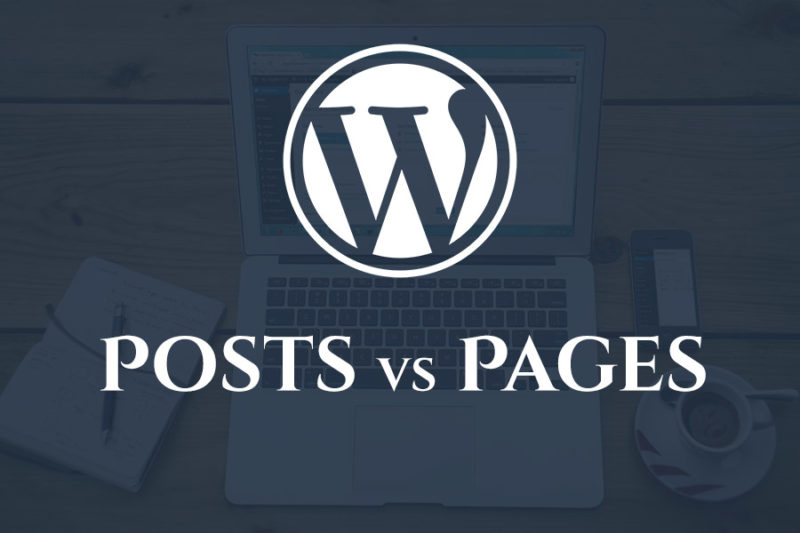In WordPress, posts and pages are the two default content types. In an earlier post, we had already compared the two.
For blogging, what we mostly use is Posts. We publish news, articles, evergreen content, etc as posts.
But for better user experience and order, we also need a way to organize this content. Right?
That's where taxonomies come in.
WordPress comes with two built-in taxonomies - categories and tags. Both of them allow you to group your blog posts sensibly.
Remember, the proper grouping of content is essential for building a good website structure.
Pages do not have any built-in taxonomies although you can create them by adding custom code.
And in this article, we are going to discuss the differences between categories and tags. By the end, you will learn to properly use them on your blog.
Here is an infographic to grasp things easier:
Required vs. not required
'Categories' is a compulsory field for WordPress posts. You must assign at least one category for a post.
If you don't do that, WordPress will assign the default category 'uncategorized'.
In contrast to that, tags are not compulsory. There aren't any default tags either. So you can either use them or avoid them completely.
What's the Purpose of Setting Categories/Tags
The purpose of categories is to group your blog posts into topics.
But, what should be the criteria you should use while creating these categories?
Here is the idea.
- Identify the main criteria by which you can divide the topics your blog covers.
- Then create a category to represent each of those pillar topics.
Also, make sure you don't overlap one category with another one. So that while creating blog posts, you won't be confused about whether to put it in one category or another.
For instance, if you have a photography blog you can set the categories as photo journeys, equipment reviews, photography tips, editing, etc.
While categories represent the main topics, tags can be a little more flexible. They are more like labels or keywords.
They can be used to refine the main categories or to create micro divisions between topics.
If we take the same example of a photography blog, you can set tags as editing with lightroom, landscape photo tips, Canon camera, Nikon lens, etc.
Hierarchical vs. non-hierarchical
Another crucial difference between categories and tags is the hierarchy. Categories can be hierarchical, which means you can create subcategories and sub-subcategories under a parent category.
Whereas tags are not hierarchical.
Best Practices
Since categories represent the main topics on your blog it is better to have around 5 to 10 categories at most.
There are no issues even if you have more than that, but that means your blog covers numerous topics. In the end, it can be difficult for you to manage all of these different topics.
Ideally, you should assign only a single category to a blog post.
In contrast to that, tags represent micro-topics, instead of the main topics. So, you can create as many as you want, although you shouldn’t overdo it.
Also, you can assign more than one tag to a blog post.
Since categories do not overlap each other, they do not create duplicate content issues. So you can choose to index category archive pages in search engines. To do that, you can set the meta robots tag to index, follow.
Whereas with tag archive pages you may have many overlapping blog posts. So indexing them can cause duplicate content issues. So it's wise to set them to noindex, follow.
SEO plugins like Yoast allow you to properly set index no index attributes to archive pages.
Other differences
Another difference is in the way you create categories or tags. For categories, you usually use just one word or two and capitalize them.
Whereas for tags, you can use multiple words in small case letters. For instance, if you want to create a long-tail keyword with five words as a tag, that's just fine. Instead, setting it as a category would be inappropriate.
Conclusion
I hope now you understand the basic differences and similarities between categories and tags.
For most sites, these two taxonomies are sufficient to classify the content. But in case you feel that they are not sufficient enough for your blog, you can also create custom taxonomies.
For that, you need to write some custom code and add it to a plugin or your themes functions.php file.
Probably we will discuss that in a later post.






